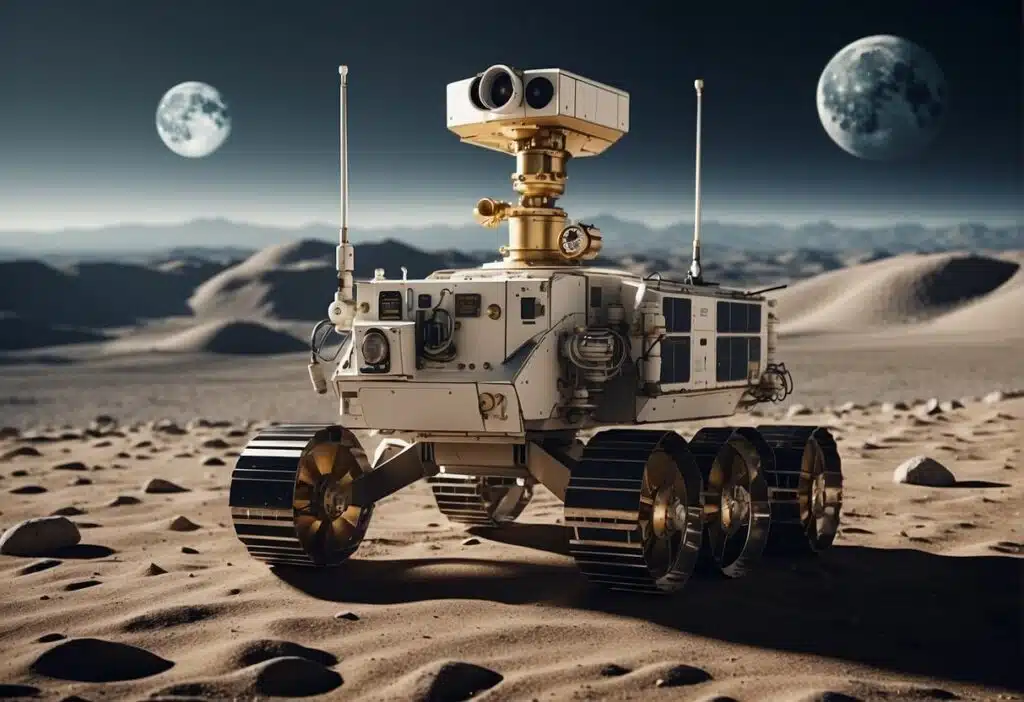Smart Cities and Infrastructure are the future of urban living. As the world becomes more interconnected and technology continues to advance, cities are evolving to become more intelligent and sustainable. Smart cities use data and technology to improve quality of life, enhance mobility, and reduce environmental impact.

Smart cities are designed to be more efficient, safer, and more comfortable for residents. They use a variety of technologies, including the Internet of Things (IoT), artificial intelligence (AI), and big data analytics, to optimize city operations. This allows for better management of resources, such as energy, water, and transportation, and can help reduce costs for both the city and its residents.
Key Takeaways
- Smart cities use data and technology to improve quality of life, enhance mobility, and reduce environmental impact.
- Key technologies in smart cities include the Internet of Things (IoT), artificial intelligence (AI), and big data analytics.
- Smart cities are designed to be more efficient, safer, and more comfortable for residents.
Overview of Smart Cities
Smart cities are urban areas that leverage technology and data collection to improve the quality of life, sustainability, and efficiency of city operations. At its core, a smart city is a connected city that uses information and communication technologies (ICT) and the Internet of Things (IoT) to enhance the delivery of services and optimize resource usage.
Defining Smart Cities
Defining a smart city is not a straightforward task, as there is no single definition that is universally accepted. However, many experts agree that a smart city is a city that uses technology to improve the quality of life of its citizens, while also reducing its environmental footprint and increasing its efficiency.
Smart cities are characterized by their ability to collect and analyze data from various sources, including sensors, mobile devices, and social media. This data is then used to make informed decisions about how to optimize city services and resources, such as transportation, energy, and waste management.
Evolution of Urban Development
The concept of smart cities has evolved over time, from the early days of urban development to the present day. In the past, urban development was focused on creating infrastructure such as roads, buildings, and utilities, with little consideration given to the impact on the environment or the quality of life of citizens.
However, as cities have grown and become more complex, the need for smarter, more sustainable solutions has become increasingly apparent. Today, smart cities are seen as a way to address these challenges, by using technology to create more efficient, sustainable, and livable urban environments.
In conclusion, smart cities are an exciting and rapidly evolving field, with the potential to transform the way we live, work, and play in urban environments. By leveraging technology and data, we can create cities that are more sustainable, efficient, and responsive to the needs of citizens.
Key Technologies in Smart Cities
In order to create a smart city, we need to integrate various technologies that work together to make the city more efficient and livable. Here are some of the key technologies that are being used in smart cities today:
Internet of Things (IoT)
The Internet of Things (IoT) is a network of interconnected devices that communicate with each other to collect and exchange data. In smart cities, IoT sensors are used to gather data on everything from traffic patterns to air quality. This data is then analyzed to help city officials make better decisions about how to manage the city. For example, IoT sensors can be used to detect when a streetlight is out and automatically alert maintenance crews to fix it.
Artificial Intelligence (AI)
AI is also transforming the way cities and infrastructure operate. By using machine learning algorithms, AI can help optimize traffic flow, improve energy efficiency, and even predict and prevent crime. For example, AI-powered traffic management systems can adjust traffic signals in real-time to reduce congestion and improve safety.
Big Data Analytics
Big data analytics is the process of analyzing large amounts of data to uncover patterns, trends, and insights. In smart cities, big data analytics is used to analyze data from various sources, including IoT sensors, social media, and other sources. This data can be used to identify areas of the city that need improvement, such as traffic congestion or air pollution. City officials can then use this data to make informed decisions about how to improve the city.
Overall, these technologies are helping to create smarter, more efficient, and more livable cities. By using IoT, AI, and big data analytics, we can make cities safer, more sustainable, and more enjoyable places to live.
Infrastructure Management

At the core of smart cities and infrastructure is the management of critical infrastructure systems. These systems are responsible for providing essential services to the community, such as energy, water, and waste management. With the help of smart systems that can monitor and manage these services, we can ensure that they are delivered efficiently and effectively.
Energy Systems
Smart energy systems are essential for ensuring that energy is delivered reliably and efficiently. These systems can monitor energy usage, identify areas of inefficiency, and optimize energy distribution. For example, smart grids can automatically adjust energy distribution based on demand, reducing the risk of blackouts and brownouts. Additionally, smart buildings can adjust their energy usage based on occupancy levels, reducing energy waste.
Water Management
Water is a precious resource, and managing it efficiently is critical for ensuring that it is available for future generations. Smart water management systems can help us monitor and manage water usage, identify leaks, and optimize water distribution. For example, smart irrigation systems can automatically adjust watering schedules based on weather conditions, reducing water waste. Additionally, smart buildings can use water-saving fixtures and systems to reduce water usage.
Waste Management
Waste management is critical for ensuring that our cities remain clean and healthy. Smart waste management systems can help us monitor and manage waste collection, identify areas of inefficiency, and optimize waste disposal. For example, smart waste bins can automatically alert waste collection services when they are full, reducing the risk of overflowing bins. Additionally, smart recycling systems can help us separate and recycle waste more efficiently, reducing the amount of waste that ends up in landfills.
In conclusion, managing infrastructure systems is critical for ensuring that our cities are efficient, sustainable, and livable. By using smart systems that can monitor and manage energy, water, and waste, we can ensure that these essential services are delivered efficiently and effectively.
Sustainable Urban Planning

As we strive towards building smart cities, sustainable urban planning is an essential aspect that we must consider. Urban planning involves the development, design, and regulation of land use and the built environment. It is a multifaceted process that includes energy systems, water systems, waste systems, sewage systems, green and blue structures, as well as infrastructure connecting urban areas at multiple levels, including transportation systems, communication systems, and information.
Green Spaces
Green spaces are a crucial component of sustainable urban planning. They improve air quality, reduce urban heat island effects, and provide a space for recreation and relaxation. Incorporating green spaces in urban planning can help mitigate the negative impacts of urbanization. These spaces can include parks, gardens, green roofs, and vertical gardens.
In addition to providing environmental benefits, green spaces can also have economic and social benefits. They can increase property values, attract tourists, and provide a space for community gatherings and events.
Eco-friendly Transportation
Eco-friendly transportation is another crucial aspect of sustainable urban planning. Encouraging alternative modes of transportation such as cycling, walking, and public transportation can reduce carbon emissions and traffic congestion. It can also improve air quality and public health.
In addition to promoting alternative modes of transportation, sustainable urban planning can also include the development of electric vehicle charging stations and the use of electric buses. These initiatives can contribute to reducing greenhouse gas emissions and improving the overall sustainability of the city.
In conclusion, sustainable urban planning is a critical aspect of building smart cities. Incorporating green spaces and promoting eco-friendly transportation can have significant environmental, economic, and social benefits. By prioritizing sustainable urban planning, we can create cities that are not only smart but also friendly to the environment and the people who live in them.
Citizen Engagement and Services

In smart cities, citizen engagement is a crucial aspect of the infrastructure. We believe that citizens should be involved in the planning and implementation of smart city projects. By doing so, cities can ensure that their projects are more citizen-centric and outcome-focused.
E-Government Services
One way to involve citizens in smart city projects is through e-government services. These services provide citizens with access to government information and services online, making it easier for them to interact with their local government. For example, citizens can use e-government services to pay their taxes, apply for permits, and report issues such as potholes or broken streetlights.
E-government services can also help governments collect data on citizen needs and preferences. This data can be used to inform smart city projects and ensure that they meet the needs of the citizens they serve. For example, a city might use data collected through e-government services to identify areas where public transportation is lacking and then invest in new transportation infrastructure.
Community Initiatives
Another way to involve citizens in smart city projects is through community initiatives. These initiatives empower citizens to take an active role in shaping their communities and improving their quality of life. For example, a city might launch a community gardening project that allows citizens to grow their own food and share it with others.
Community initiatives can also help to build social cohesion and strengthen community bonds. By working together on projects that benefit their communities, citizens can develop a sense of ownership and pride in their neighborhoods. This can lead to increased civic engagement and a greater sense of community spirit.
In summary, citizen engagement is a vital component of smart city infrastructure. By involving citizens in the planning and implementation of smart city projects, cities can ensure that their projects are more citizen-centric and outcome-focused. E-government services and community initiatives are two effective ways to involve citizens in smart city projects and improve the quality of life for all residents.
Challenges and Solutions

When it comes to building smart cities and infrastructure, there are a number of challenges that need to be addressed. In this section, we will explore some of the most significant challenges and potential solutions.
Privacy and Security
One of the biggest concerns with smart cities and infrastructure is privacy and security. As we collect more data and connect more devices, the risk of cyberattacks and data breaches increases. Additionally, there is a risk that personal information could be misused or abused by governments or corporations.
To address these concerns, we need to implement strong privacy and security protocols. This includes using encryption to protect data, implementing access controls to limit who can access sensitive information, and developing clear policies around data collection and use.
Digital Divide
Another challenge facing smart cities and infrastructure is the digital divide. Not everyone has access to the same technology or internet speeds, which can create inequalities and limit the potential benefits of smart cities.
To address this challenge, we need to ensure that everyone has access to the necessary technology and infrastructure. This includes investing in broadband infrastructure in underserved areas, providing low-cost or free internet access to low-income households, and developing programs to teach digital skills to those who may be less familiar with technology.
Overall, building smart cities and infrastructure is a complex task that requires us to address a number of challenges. By working together and implementing smart solutions, we can build a more equitable and sustainable future for all.
Case Studies of Global Smart Cities
Examining the development of smart cities worldwide reveals various approaches cities have taken to create their unique smart city ecosystems. This section highlights two leading global smart cities known for their innovation and sustainability.
Singapore
Singapore stands as one of the most renowned smart cities globally, having heavily invested in smart city technology for many years, resulting in one of the most advanced and efficient smart city ecosystems.
A key feature of Singapore’s smart city infrastructure is its focus on sustainability. The city has implemented numerous green initiatives, such as the “Green Mark” certification system for buildings, which incentivizes developers to construct sustainable and energy-efficient buildings. Additionally, Singapore’s “Smart Mobility 2030” plan aims to enhance the efficiency and sustainability of the city’s transportation network through various smart transportation solutions.
Barcelona
Barcelona has also emerged as a significant player in the smart city arena. The city has introduced several innovative smart city solutions, such as the “Superblocks” program, which creates pedestrian-friendly neighborhoods by restricting car traffic in specific areas. Furthermore, Barcelona’s “Smart Lighting” program uses sensors to adjust street lighting levels based on pedestrian traffic.
A standout feature of Barcelona’s smart city ecosystem is its emphasis on citizen engagement. Initiatives like the “Decidim Barcelona” platform encourage citizens to propose and vote on smart city projects, fostering active participation in developing smart city solutions.
Overall, these two global smart cities showcase the potential of smart city technology to create more sustainable, efficient, and livable urban environments.
Future Trends in Smart Cities
Looking ahead, several emerging trends will shape the future of smart cities. This section explores two key trends expected to significantly impact smart city infrastructure: predictive analytics and autonomous vehicles.
Predictive Analytics
Predictive analytics involves using data, statistical algorithms, and machine learning techniques to predict future outcomes based on historical data. In smart cities, predictive analytics can anticipate traffic congestion, forecast energy demand, and even predict crime rates.
An example is Chicago’s “Array of Things” project, which involves installing a network of sensors throughout the city to collect data on air quality, pedestrian traffic, and more. Analyzing this data provides city officials with insights into how various factors impact the city’s overall health and well-being.
Autonomous Vehicles
Autonomous vehicles, or self-driving cars, are poised to play a significant role in the future of smart cities. These vehicles use sensors, cameras, and machine learning algorithms to navigate without human intervention.
One potential benefit of autonomous vehicles is the reduction of traffic congestion. Optimizing traffic flow and minimizing accidents caused by human error could be possible with self-driving cars. Moreover, autonomous vehicles could facilitate easier transportation without the need for personal cars, potentially reducing the overall number of vehicles on the road.
As we continue exploring smart city possibilities, predictive analytics and autonomous vehicles will be crucial trends to monitor. Leveraging these technologies can help create more efficient, sustainable, and livable cities for everyone.
Frequently Asked Questions
How can technology improve urban infrastructure in smart cities?
Technology can play a crucial role in enhancing urban infrastructure in smart cities. For example, the Internet of Things (IoT) can be used to monitor and manage public utilities like water and electricity, reducing waste and improving efficiency. Additionally, smart transportation systems can reduce traffic congestion, lower carbon emissions, and improve public safety. By leveraging technology, cities can become more sustainable, efficient, and livable.
What are some successful examples of smart city technology implementations?
There are many successful examples of smart city technology implementations around the world. For instance, Singapore has implemented a comprehensive smart transportation system, which includes real-time traffic monitoring, predictive maintenance, and autonomous vehicles. Barcelona has implemented a smart lighting system, which uses sensors to adjust lighting levels based on pedestrian and vehicle traffic. Amsterdam has implemented a smart waste management system, which uses sensors to optimize collection routes and reduce waste.
What are the biggest obstacles to developing smart infrastructure in urban areas?
Developing smart infrastructure in urban areas can be challenging due to several factors. One of the biggest obstacles is the cost of implementing new technologies and upgrading existing infrastructure. Additionally, there may be regulatory hurdles, privacy concerns, and resistance from citizens who are hesitant to adopt new technologies. Overcoming these obstacles requires collaboration between government, industry, and citizens to create a shared vision for the future of smart cities.
How will smart cities evolve in the future?
Smart cities will continue to evolve in the future as new technologies emerge and existing technologies become more advanced. For example, the use of artificial intelligence and machine learning will enable cities to make more informed decisions about resource allocation and infrastructure management. Additionally, the integration of renewable energy sources and smart grid technologies will make cities more sustainable and resilient in the face of climate change.
What are the environmental impacts of smart city infrastructure?
Smart city infrastructure can have both positive and negative environmental impacts. On the one hand, the use of renewable energy sources and smart grid technologies can reduce greenhouse gas emissions and improve air quality. On the other hand, the production and disposal of electronic devices and sensors used in smart city infrastructure can contribute to e-waste and other environmental issues. Therefore, it is important to consider the full lifecycle of smart city technologies and their impact on the environment.
How does smart infrastructure contribute to the quality of life for city residents?
Smart infrastructure can contribute to the quality of life for city residents in several ways. For example, smart transportation systems can reduce commute times and improve public safety. Smart lighting systems can enhance public spaces and improve safety at night. Smart waste management systems can reduce litter and improve sanitation. Overall, smart infrastructure can make cities more livable, sustainable, and enjoyable places to live.





